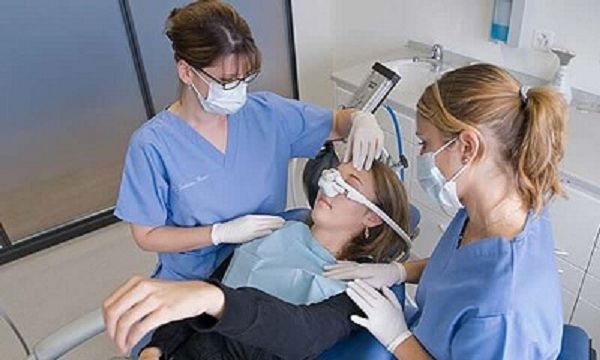Nitrous oxide sedation, also known as “laughing gas,” is a popular method used by dental professionals to help patients relax during procedures. This mild sedative has been used for over a century, providing a safe and effective way to ease dental anxiety. In this article, we’ll explore what nitrous oxide sedation is, how it works, its benefits, and who is an ideal candidate for this type of sedation.
What is Nitrous Oxide Sedation?
Nitrous oxide sedation involves inhaling a mixture of nitrous oxide (N2O) and oxygen through a mask placed over the nose. When inhaled, nitrous oxide induces a feeling of relaxation and euphoria, helping patients feel calm and at ease during dental procedures. Despite its name, nitrous oxide does not put the patient to sleep but rather helps to reduce anxiety and discomfort.
How Does Nitrous Oxide Sedation Work?
Nitrous oxide works by affecting the brain and nervous system. When inhaled, it interacts with neurotransmitters, which are chemical messengers in the brain, to promote feelings of relaxation. The sedative effects are felt almost immediately, with the patient experiencing a sense of calm and even a slight tingling sensation. However, patients remain fully conscious and responsive throughout the procedure.
The concentration of nitrous oxide can be adjusted by the dental team to ensure the patient feels comfortable. Once the procedure is complete, the effects of nitrous oxide wear off quickly, allowing patients to return to their normal activities without lingering sedation effects.
Benefits of Nitrous Oxide Sedation
- Anxiety Relief: One of the most significant benefits of nitrous oxide sedation is its ability to reduce dental anxiety. Many individuals experience fear or nervousness before a dental appointment, and nitrous oxide can help to calm these feelings.
- Quick Onset and Recovery: Unlike other forms of sedation, such as intravenous (IV) sedation, nitrous oxide works quickly, and its effects wear off almost immediately. This allows patients to leave the dentist’s office shortly after their procedure without any lingering drowsiness.
- Safety: Nitrous oxide is one of the safest forms of sedation, with minimal side effects. It is also non-invasive, meaning there are no needles or injections involved. Dentists can easily adjust the dosage to suit the patient’s needs.
- Pain Management: While nitrous oxide does not completely numb the area, it does have mild analgesic (pain-relieving) properties, which can make dental procedures more comfortable.
Who is an Ideal Candidate for Nitrous Oxide Sedation?
Nitrous oxide sedation is a versatile option suitable for a wide range of patients. It is especially beneficial for those with mild to moderate dental anxiety, children undergoing dental procedures, or individuals who need a little extra help to relax during routine visits. Nitrous oxide is also ideal for those who need multiple procedures done in one visit, as it helps to keep them calm and comfortable throughout the appointment.
However, not everyone is a good candidate for nitrous oxide sedation. People with respiratory issues, such as chronic obstructive pulmonary disease (COPD), may not be suitable for this treatment. Additionally, patients who are pregnant, particularly in the first trimester, may need to avoid nitrous oxide.
Conclusion
Nitrous oxide sedation is a safe, effective, and well-tolerated method to help patients overcome dental anxiety and remain comfortable during procedures. Its quick onset and recovery make it a preferred choice for many individuals seeking a stress-free dental experience. If you’re someone who feels nervous about going to the dentist, discussing nitrous oxide sedation with your dental provider may be a great option to consider for your next visit.










